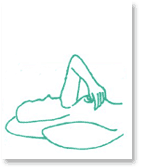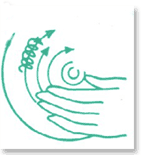|
Your Guide to Breast Self-Exam
What is a breast self-exam?
A
self-exam of your breasts is something you should perform on a monthly basis
as a preventive measure for cancer of the breasts. When you perform a
self-exam you are searching for lumps, discharge from the nipples, or other
strange sensations on your breast.
Breast Cancer
is the most common type of cancer in females in the United States. Approximately 1 in 10
women develop breast cancer. The women themselves find most cases while
performing self-exams.
If found at an
early stage, breast cancer can be treatable and chances for recovery are
higher
which is why all women should perform self-exams regularly.
Back to top
When is the best time to perform a breast exam?
Examine your breasts once a month, towards the end of your menstrual cycle
when your breasts are not tender to the touch and are not swollen. If you
have already gone through menopause or have had a hysterectomy, examine your
breasts on the first day of the month or on a date you'll remember easily
every month.
Back to top
The 5 Steps
|
Step 1-While in the Shower,
raise
your right arm. Use the finger pads of your left hand to touch every part
of your right breast. Feel gently for any lumps or changes under the skin.
Then raise your left arm and use your right hand to examine your left
breast.
|
Step 1
 Back
to top Back
to top
|
|
Step 2-Standing before a mirror,
place
your arms at your sides. Check both breasts for anything unusual-discharge,
puckering, dimpling or changes in the skin texture. Clasp your hands behind
your head and look carefully for any changes in the shape or contour of
your breasts. Gently squeeze both nipples and look for discharge.
|
Step 2
 Back
to top Back
to top
_________________
|
|
Step 3-Lie flat on your back,
with
your left arm over your head and a pillow or towel under your left
shoulder. Put your left hand behind your head. Use your right hand to begin
touching your left breast gently but firmly. Repeat for the right side.
|
Step 3
 Back
to top Back
to top
_________________
|
|
Step 4-Starting at the outer edge,
of
your breasts, Press the flat part of your fingers in small circles, gradually
spiraling toward the nipple. Be sure to cover the entire breast. Repeat
this exam on your right breast.
|
Step 4
 Back
to top Back
to top
_________________
|
|
Step 5-Finally rest your arm,
on
a firm surface and use the same circular motion to examine the area between
the breast and the underarm, and the underarm itself.
All of this is breast tissue too.
You've completed your breast exam for this month!
|
Step 5
 Back
to top Back
to top
_________________
|
When should I contact my doctor?
If you find a lump, nodule or discharge during your
breast exam contact your doctor immediately. Don't be scared, most lumps are
not cancerous but only your doctor can evaluate that.
Back to top
Description
Of Screening Exam
A
Comprehensive Breast Cancer Screening at Lifetime includes:
-
Screening mammogram with a
radiological interpretation accredited by
the American College of Radiology (ACR) and
certified by the
Food and Drug Administration.
-
a clinical breast examination
with breast self-examination instruction performed by a specially
trained R.N. or A.R.N.P.
-
additional breast diagnostic
imaging services are offered at Lifetime
such as diagnostic mammogram, ultrasound and breast MRI
Back to top
Computer
Aided Detection
Screening
mammograms can be “double-checked” at Lifetime by the R2
Image Checker.
This sophisticated computer program actually finds areas which appear
abnormal to it and point these out to the radiologist to make sure that they
have been thoroughly evaluated. Medicare and most commercial insurance
companies reimburse the charge for this important service. If you’d
like more information on CAD or want to schedule your next screening
mammogram with it, please call us at Lifetime.
Back to top
High Risk Breast Screening Clinic
Provides risk
assessment and risk management options for women concerned about their risk
for developing breast cancer or women who have been determined to be at
increased risk
Services
Include:
-
estimation of breast cancer
risk using models that consider multiple variables
-
counseling regarding
surveillance recommendations, lifestyle modifications, chemoprevention
and prophylactic surgery
-
physical breast examination
with instruction on self breast examination
-
screening or diagnostic
mammogram same day diagnostic services including diagnostic mammogram,
breast ultrasound and fine needle aspiration related services including Genetic
Counseling and Testing
Back to top
|